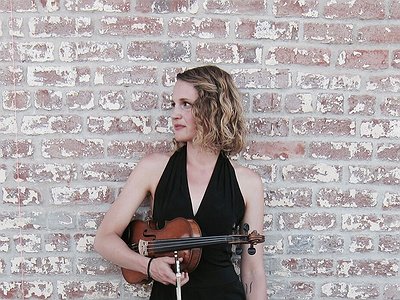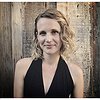Part 2
Collaborations can take on many forms. What role do they play in your approach and what are your preferred ways of engaging with other creatives through, for example, file sharing, jamming or just talking about ideas?
Collaboration is the most rewarding aspect of this career. So much of our time as composers is spent alone in our studios; the moments when we get to share ideas, communicate with other artists are precious and valuable. As I mentioned before, collaboration with both filmmakers and other musicians pushes me to become a better, more creative, communicative, dexterous and inspired composer
Could you take us through a day in your life, from a possible morning routine through to your work? Do you have a fixed schedule? How do music and other aspects of your life feed back into each other - do you separate them or instead try to make them blend seamlessly?
I'm a night owl, always have been. That being said, I also try to be a morning person by force so I can squeeze as many hours out of the day as possible. When I wake up, I don't get to work right away -- I like to drink coffee and touch base with the outside world by listening to NPR or a podcast. After that, I'll submerge and come up for air every few hours. It's very important for me to reset after a few hours, and to take short breaks to give my ears a rest -- fresh air or a warm meal -- something that allows my mind and body separate from music, so I can return refreshed. And then I submerge again, rinse and repeat. I love to work long hours and late into the night.
Could you describe your creative process on the basis of a soundtrack or album that's particularly dear to you, please? Where did the ideas come from, how were they transformed in your mind, what did you start with and how do you refine these beginnings into the finished work of art?
From my experience, this process is different on every project. The very first conversations between the composer and the director and producers - before any music is written - is usually in broad strokes. This is the moment to define the tone of the film, and how music should function. From there, I usually create sonic palette tests away from picture – skeletal thematic material - to start refining the instrumentation and colors that we'll be working with. Once we find our footing with the aesthetic, I write to picture. Often times these very first palette tests become the resource from which the entire score grows and transforms.
There are many descriptions of the ideal state of mind for being creative. What is it like for you? What supports this ideal state of mind and what are distractions? Are there strategies to enter into this state more easily?
I reach peak creativity when I am equally calm and energized. Also, being highly organized is crucial for me. Knowing exactly what I need to tackle, and having all of my instruments and tools at my disposal allows me to be creative immediately. Working in film can be a high-stress environment, so you have to have techniques to harness that energy for good.
How do you see the relationship between the 'sound' aspects of film music and the 'composition' aspects? How do you work with sound and timbre to meet certain production ideas and in which way can certain sounds already take on compositional qualities?
It's such an interesting question. For the way I write, “sound design” and “music” are nearly one and the same. I love playing with the boundaries of what the ear designates as sound and music, often times with the intent of blurring them. If an element of sound design has a pitch or rhythm, is it music? Similarly, if an element in the score is so textural and sporadic one cannot pin point a pitch or pattern, is it sound design? Sometimes it becomes a matter of who is doing it that designates it as either score or sound design.
Our sense of hearing shares intriguing connections to other senses. From your experience, what are some of the most inspiring overlaps between different senses - and what do they tell us about the way our senses work? What happens to sound at its outermost borders?
Watching a film is, in itself, a multi-sensory experience, and even more so now with advances in virtual and augmented reality. I recently worked on a project, The Angry River, that used eye-tracking technology to trace which characters the viewers’ eyes were focussed on, and thus triggering a specific version of the story. I’m intrigued by these developments that tease apart and challenge how we relate with our surroundings, both consciously and unconsciously, and how that relates to my craft.
Art can be a purpose in its own right, but it can also directly feed back into everyday life, take on a social and political role and lead to more engagement. Can you describe your approach to art and being an artist?
I spend long hours in my studio, and often times with little contact with the outside world. But, I never feel isolated and myopic because of this — I’ve had the fortune of writing music for films that each wrestle with their own aspect of the human condition; my projects often educate and challenge me both as a social and political person as well as a composer and artist.
It is remarkable, in a way, that we have arrived in the 21st century with the basic concept of soundtracks still intact. Do you have a vision of music, an idea of what film music could be beyond its current form?
I look forward to technological advances that enhance and augment my creative process. As composers, we already have seemingly infinite possibilities at our fingertips, so it is a matter of wielding these tools to our advantage while still maintaining our individual voices. Regardless of how the technology evolves and what form film music takes; regardless of software upgrades, new and improved plugins, ground-breaking sample libraries etc. — we still value the living, breathing humanness of live performance. Even the presence of one “live” element can change the entire character of a piece. For my process and aesthetics, I am not threatened but excited by these changes; it only means a larger sandbox to play in.






